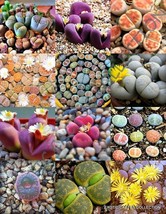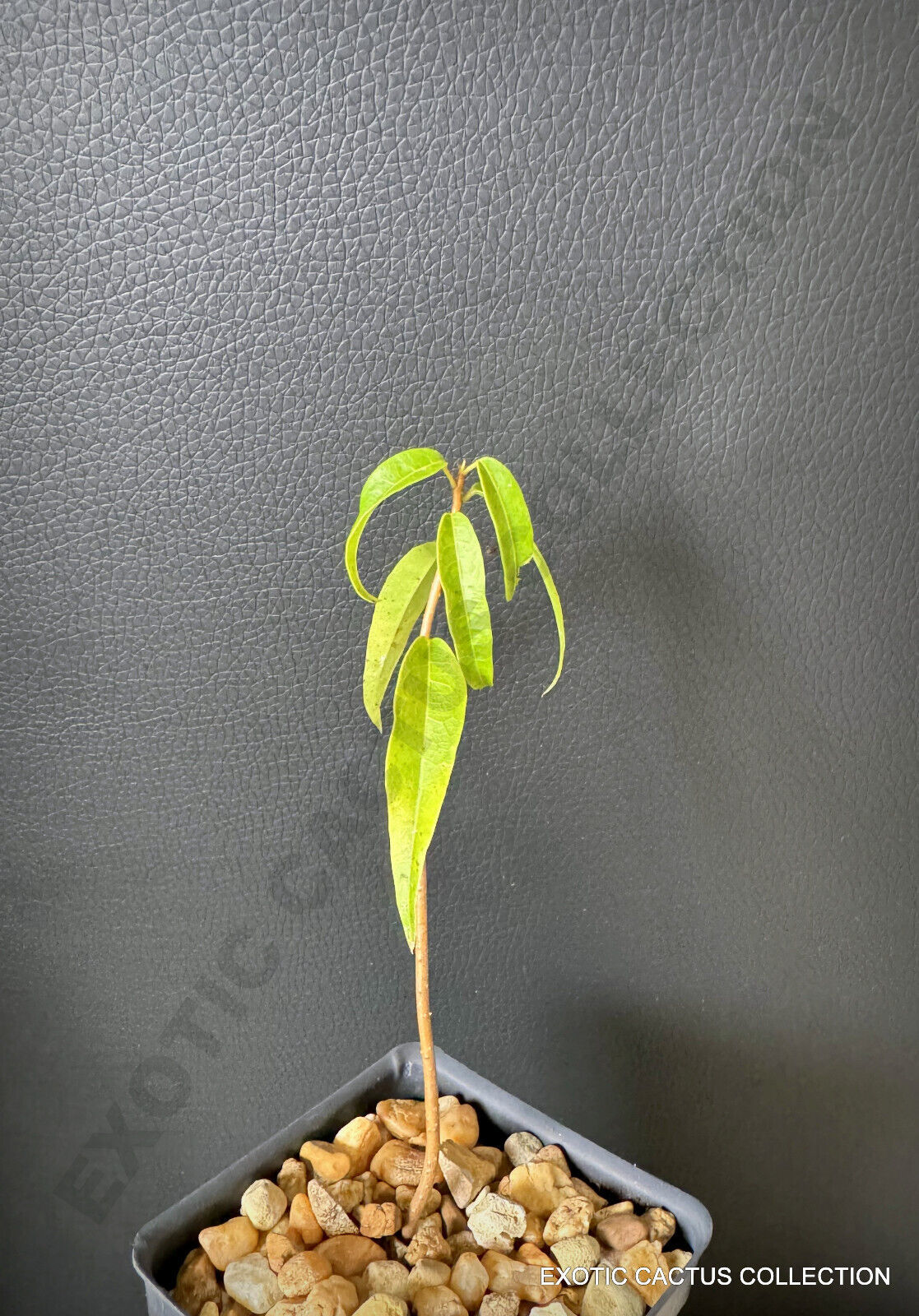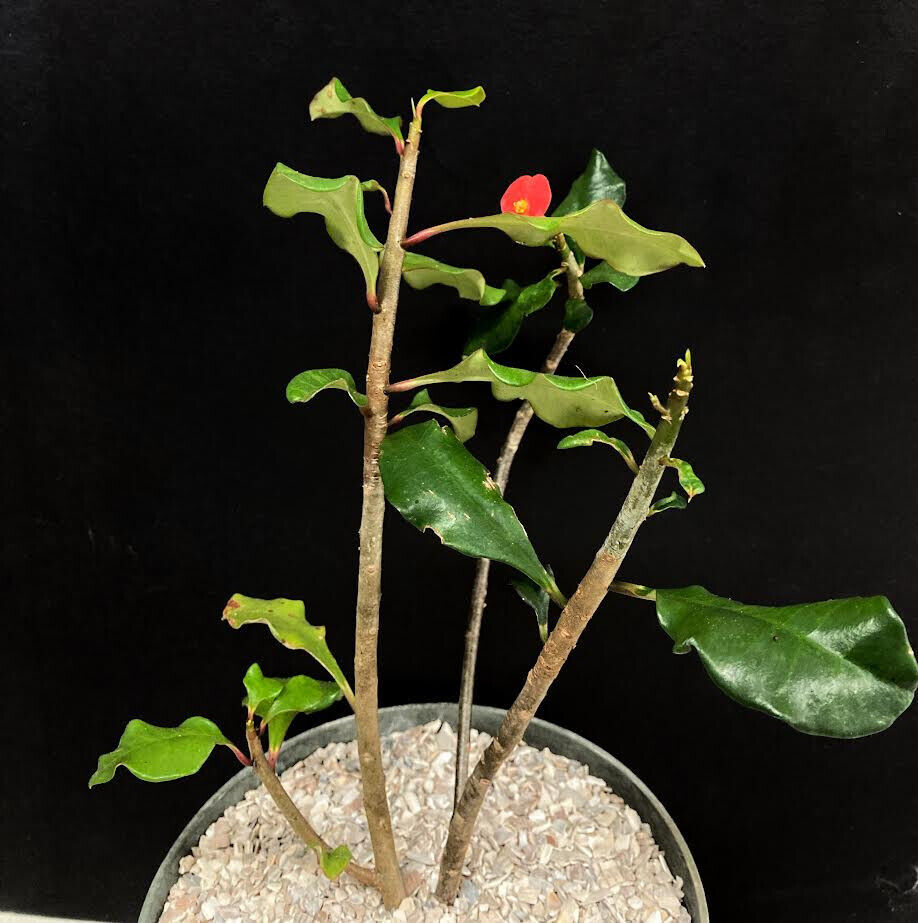Color Lithops Mix Succulent Exotic Living and 50 similar items
Free Shipping
COLOR LITHOPS MIX succulent EXOTIC living stones desert rock seed plant 15 SEEDS
$8.99
View full item details »
Shipping options
Estimated to arrive by Fri, May 2nd.
Details
FREE via Expedited shipping (1 to 3 business days) to United States
Offer policy
OBO - Seller accepts offers on this item.
Details
Return policy
Purchase protection
Catalog info
Payment options
PayPal accepted
PayPal Credit accepted
Venmo accepted
PayPal, MasterCard, Visa, Discover, and American Express accepted
Maestro accepted
Amazon Pay accepted
Nuvei accepted
View full item details »
Shipping options
Estimated to arrive by Fri, May 2nd.
Details
FREE via Expedited shipping (1 to 3 business days) to United States
Offer policy
OBO - Seller accepts offers on this item.
Details
Return policy
Purchase protection
Catalog info
Payment options
PayPal accepted
PayPal Credit accepted
Venmo accepted
PayPal, MasterCard, Visa, Discover, and American Express accepted
Maestro accepted
Amazon Pay accepted
Nuvei accepted
Item traits
| Category: | |
|---|---|
| Quantity Available: |
358 in stock |
| Condition: |
Unspecified by seller, may be new. |
| Plant Category: |
Cactus & Succulents |
Listing details
| Shipping discount: |
Seller pays shipping for this item. |
|---|---|
| Posted for sale: |
More than a week ago |
| Item number: |
775901234 |
Item description
PACKAGE OF 15 SEEDS, COLOR LITHOPS MIX
Interesting
shape and color, lots of species and varieties mixed, the package have
all seeds mixed not individual labeled, the seeds were took this
season, We have a lot of extremely rare cactus if you want something
rare let me know and I will listing for you. Questions? feel free to
email me.
Check out my other items! or visit my store EXOTIC CACTUS COLLECTION for more rare cactus and seeds.
Lithops is a genus of succulent plants native to southern Africa. "Lithos" means "stone" and "-ops"
means "face" in Ancient Greek; therefore "Lithops" means "stone-like".
This is a very good description of these plants, which avoid being eaten
by blending in with surrounding rocks. They are often known as pebble plants or living stones. The formation of the name from the greek "-ops" means that even a single plant is called a Lithops.
Individual Lithops
plants consist of one or more pairs of bulbous, almost fused leaves
opposite to each other and hardly any stem. The slit between the leaves
contains the meristem and produces flowers and new leaves. The leaves of Lithops
are mostly buried below the surface of the soil, with a partially or
completely translucent top surface or window allowing light to enter the
interior of the leaves for photosynthesis.
During winter a new
leaf pair, or occasionally more than one, grows inside the existing
fused leaf pair. In spring the old leaf pair parts to reveal the new
leaves and the old leaves will then dry up. Lithops leaves may
shrink and disappear below ground level during drought. Lithops in
habitat almost never have more than one leaf pair per head, the
environment is just too arid to support this. Yellow or white flowers
emerge from the fissure between the leaves after the new leaf pair has
fully matured, one per leaf pair. This is usually in autumn, but can be
before the summer equinox in L. pseudotruncatella and after the winter equinox in L. optica. The flowers are often sweetly scented.
The most startling adaptation of Lithops
is the colouring of the leaves. The leaves are not green as in almost
all higher plants, but various shades of cream, grey, and brown,
patterned with darker windowed areas, dots, and red lines. The markings
on the top surface disguise the plant in its surroundings.
Lithops are obligate outcrossers and require pollination from a separate plant. Like most mesembs, Lithops fruit is a dry capsule that opens when it becomes wet; some seeds
may be ejected by falling raindrops, and the capsule re-closes when it
dries out. Capsules may also sometimes detach and be distributed intact,
or may disintegrate after several years.
Lithops occur
naturally across wide areas of Namibia and South Africa, as well as
small bordering areas in Botswana and possibly Angola, from sea level to
high mountains. Nearly a thousand individual populations are
documented, each covering just a small area of dry grassland, veld, or
bare rocky ground. Different Lithops species are preferentially found in particular environments, usually restricted to a particular type of rock. Lithops have not naturalised outside this region.
Rainfall in Lithops
habitats ranges from approximately 700mm/year to near zero. Rainfall
patterns range from exclusively summer rain to exclusively winter rain,
with a few species relying almost entirely on dew formation for
moisture. Temperatures are usually hot in summer and cool to cold in
winter, but one species is found right at the coast with very moderate
temperatures year round.
Lithops are popular novelty house
plants and many specialist succulent growers maintain collections. They
are relatively easy to grow if given sufficient sun and a suitable well
drained-soil.
Normal treatment in mild temperate climates is to
keep them completely dry during winter, watering only when the old
leaves have dried up and been replaced by a new leaf pair. Watering
continues through autumn when the plants flower and then stopped for
winter. The best results are obtained with additional heat such as a
greenhouse. In hotter climates Lithops will have a summer
dormancy when they should be kept mostly dry, and they may require some
water in winter. In tropical climates, Lithops can be grown primarily in winter with a long summer dormancy. In all conditions, Lithops will be most active and need most water during autumn and each species will flower at approximately the same time.
Lithops
thrive best in a coarse, well-drained substrate. Any soil that retains
too much water will cause the plants to burst their skins as they
over-expand. Plants grown in strong light will develop hard strongly
coloured skins which are resistant to damage and rot, although
persistent overwatering will still be fatal. Excessive heat will kill
potted plants as they cannot cool themselves by transpiration and rely
on staying buried in cool soil below the surface.
Propagation of Lithops
is by seed or cuttings. Cuttings can only be used to produce new plants
after a plant has naturally divided to form multiple heads, so most
propagation is by seed. Lithops can readily be pollinated by hand
, and seed will be ripe about 9 months later. Seed is easy to
germinate, but the seedlings are small and vulnerable for the first year
or two.
Super tiny seeds but Easy to grow. seeds are super
tiny but easy to grow after place it on wet soil.
Product reviews for "Equinox Seeds"
Loading
|
Why are we showing these items?
Booth
Exotic_Cactus |

|

-
Refine your browsing experience
We can show you more items that are exactly like the original item, or we can show you items that are similar in spirit. By default we show you a mix.
Loading
This item has been added to your cart
 COLOR LITHOPS MIX succulent EXOTIC living stones desert rock seed plant 15 SEEDS added to cart.
358 available in stock
COLOR LITHOPS MIX succulent EXOTIC living stones desert rock seed plant 15 SEEDS added to cart.
358 available in stock
View Cart or continue shopping.
 Please wait while we finish adding this item to your cart.
Please wait while we finish adding this item to your cart.
Get an item reminder
We'll email you a link to your item now and follow up with a single reminder (if you'd like one). That's it! No spam, no hassle.
Already have an account?
Log in and add this item to your wish list.

























































Hope to have a better fed back once the germinate